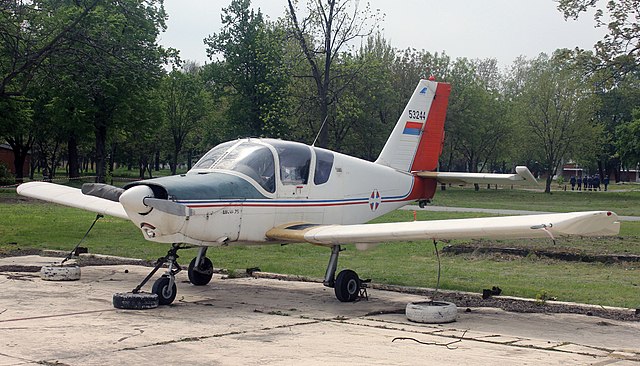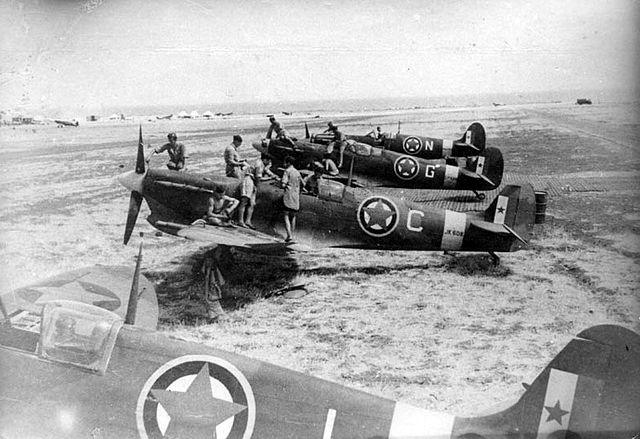Designed in 1975 to replace the UTVA Aero 3 as the primary basic trainer in the Yugoslav Air Force. It features upward opening gull-wingtype access doors to the two-seat side-by-side cockpit. Another characteristic is a row of air scoops, presumably for cockpit ventilation, in the central front frame of the cockpit. The Utva 75 made its maiden flight in 1976. Between 1978 and 1985, a total of 136 Utva 75s were produced for the former Yugoslav Air Force. Following the breakup of Yugoslavia, many were passed on to successor states.
UTVA 75
Slovenian Utva-75
Bosnian Utva-75
Utva-75 Serbian air force
The Air Force and Air Defence, was one of three branches of the Yugoslav People's Army, the Yugoslav military. Commonly referred-to as the Yugoslav Air Force, at its height it was among the largest in Europe. The branch was disbanded in 1992 after the Breakup of Yugoslavia. In the year 1990, the Air Force had more than 32,000 personnel, but as a result of its more technical requirements, the Air Force had less than 4,000 conscripts.
Spitfires of the No 352 (Y) Squadron British Royal Air Force (Balkan Air Force) before first mission on August 18, 1944, from Canne, Italy
Yugoslav air force G-4 Super Galeb on display at the 1991 Paris air show
Yugoslavian J-22 Orao exhibited in the Museum of Aviation in Belgrade
Hawker Hurricane Mk IVRP with Yugoslav Air Force markings








